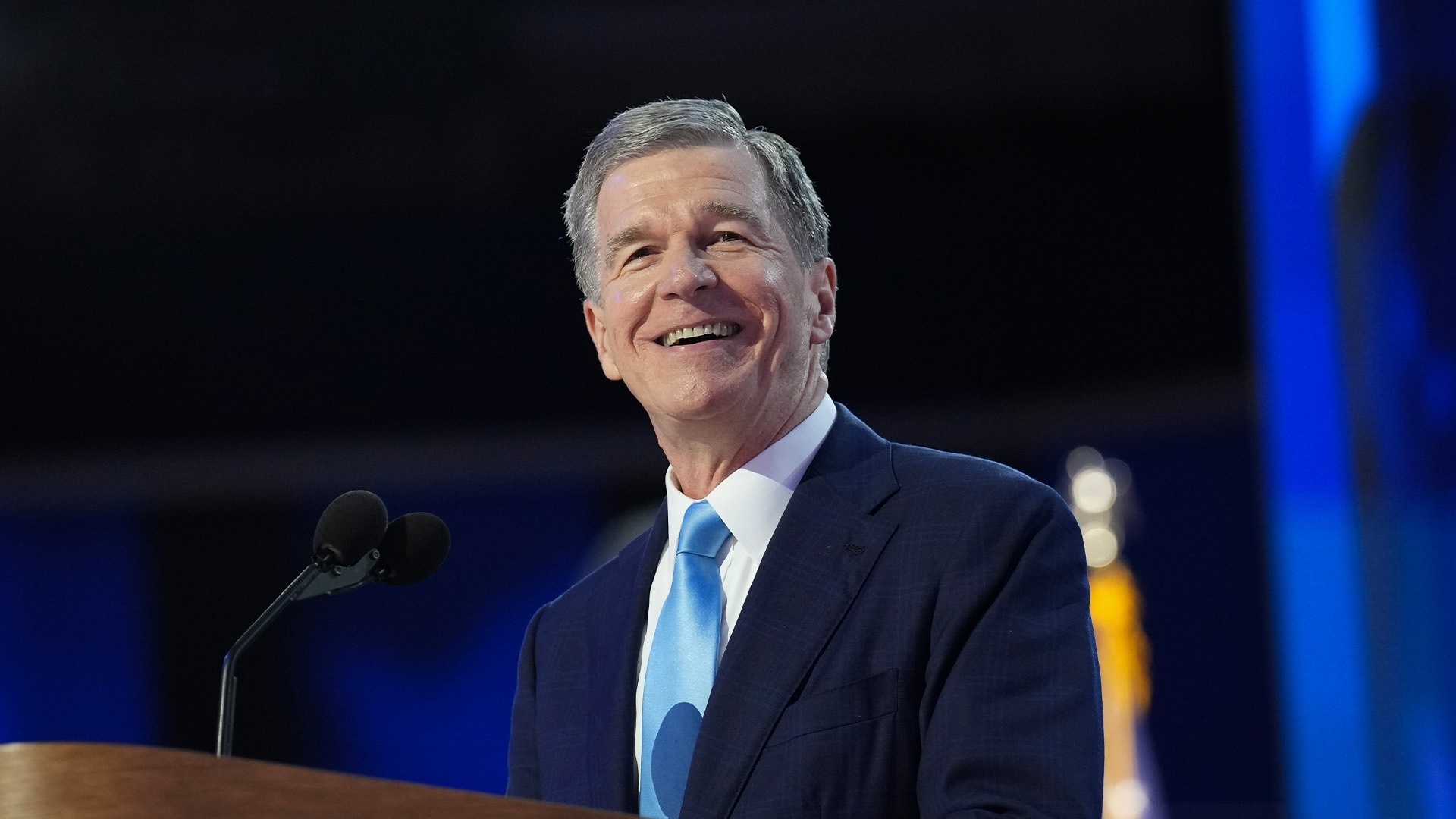North Dakota
Port: Here’s a scary and deeply unsatisfying column about North Dakota’s growing crime problem

MINOT, N.D. — In the wee hours of Feb. 3, 2023, law enforcement officers in my community responded to a shooting at a local bar called the Dakota Lounge.
Two people were injured,
and a man was arrested on charges of aggravated assault, terrorizing, and unlawful firearm possession.
More recently, on May 14, at the Original Nightclub, which is also in Minot, a man was shot and killed. The suspect
has been arrested and charged
with manslaughter and reckless endangerment.
Remarkably, one guy was at both of these terrible incidents. Michael Davis,
who recently gave an interview to my friend Joe Skurzewski, a reporter at KMOT TV in Minot,
was one of those injured in the shooting at the Dakota Lounge, and he was for the deadly shooting at the Original.
He was a bystander, each time, he told Skurzewski. Just out with some friends to have a good time. “We need to get on top of this,” he said. “It’s the second shooting in … three months?”
He’s right. North Dakota has a problem with rising levels of violent crime. We do need to get on top of it.
I combed through
the last six annual crime reports from the Office of the Attorney General,
tracking some of the most common types of violent crimes against persons.
While the number of murders in the state was flat from 2016 to 2021, albeit with a spike during the pandemic years, other types of worrisome crime like rape, aggravated assault, simple assault, intimidation, and stalking have grown steadily, both before the pandemic and after.
Measuring the growth in these crime categories is alarming.
Rapes are up nearly 31%.
Simple assaults and aggravated assaults are up nearly 21 and 17%, respectively.
Intimidation crimes were up more than 51%, while stalking crimes were up over 41%.
Population growth doesn’t explain this dramatic growth. Our state’s population did increase from 2016 to 2021, but only by 2.5%.
The Attorney General’s Office
tracks the crime rate
in the context of population growth. For what’s called “group A” offenses — the most serious types of crimes against people, property, and society — we’ve seen a 5.26% increase in the crime rate from 2016 to 2021.
The rate for the worst types of crime is growing more than twice as fast as the population.
These numbers paint a picture of a burgeoning problem. One that has prompted many of you to think of some knee-jerk solutions that are firmly rooted in your political perspective.
Left-of-center readers perhaps see a gun problem. Right-of-center readers might be inclined to echo the arguments of Attorney General Drew Wrigley, who thinks our courts and prosecutors are going too easy on violent offenders,
and lobbied aggressively,
and ultimately unsuccessfully, for tough new sentencing laws.
Jeremy Turley / Forum News Service
But these explanations seem too simplistic. North Dakota has always had a lot of guns, and while you could argue that our state has eased gun laws in recent years, they weren’t exactly draconian in the first place. Also, can we really say that guns are driving dramatic increases in crimes like rape? Or stalking? Does a fight start because someone has a gun, or does the presence of a gun only make that fight more fraught?
On the other side of the coin, isn’t throwing more people in jail just reactionary? If we’re putting someone in jail for a violent crime, that means a violent crime has already happened. We didn’t prevent anything. And prison, it must be said,
is less of a deterrent to crime than the throw-the-book-at-them crowd likes to think.
Convenient conclusions about these rising levels of crime are just that. Convenient. When we debate problems like these, we often want to shoehorn them into existing political narratives. If we had fewer guns, tougher gun laws, more cops, and tougher sentences for criminals, all would be well, they tell us.
But there’s something else going on in our society that’s driving this.
Something more slippery. Harder to define. There is a malaise, not just in North Dakota, but in America. It’s the reason why people feel the need to carry guns when they’re out with their friends, to brandish them, and even use them if confronted with some petty argument.
It’s why our politics have grown so heated and hateful, and why demagogic political figures, who delight in painting the opposition as more than just wrong but evil, and sowing poisonous rhetoric to the masses, carry so much appeal in this moment.
We all laugh at the videos of so-called “Karens” on the internet with their let-me-talk-to-your-manager meltdowns or the ardent keyboard warriors on social media with their endless histrionics, but maybe it’s not funny. Maybe someone throwing a tirade — and live-streaming themselves doing it — because the fast food worker forgot the french fries is a symptom of a darker trend.
A darkness that has led our left-of-center friends to
shrug off burning police stations,
and our right-of-center friends to carry on as if the Jan. 6, 2021, riot was just
a normal visit to the capitol by a bunch of tourists.
My point is that we know there’s a problem. We can measure it in our crime data. It unfolds in front of us on our various screens. And yet it’s not a problem that ready-made solutions like gun control or tough-on-crime policies can easily address. There may not even be a public policy solution. This may be something we have to address in our homes and our churches. In our schools, civic organizations, and social clubs.
We need Americans to choose to be better. We need them to be less paranoid, and more patient. Less angry, and more willing to live and let live.
And if you have any ideas on accomplishing that, I’m all ears.

North Dakota
North Dakota State Capitol displays ‘2025′ for new year

BISMARCK, N.D. (KFYR) – The North Dakota State Capitol lit up windows on the building to display “2025″ for the new year.
The number 2025 was displayed on all sides of the Capitol.
According to the Office of Management and Budget, the Capitol has been doing light displays since Dec. 19, 1934.
Happy New Year from Your News Leader!
Copyright 2024 KFYR. All rights reserved.
North Dakota
Brock Osweiler to Join ESPN Broadcast Team for FCS Championship Game Between Montana State, North Dakota State – Flathead Beacon
Flathead High School alum, former Kalispell resident and retired NFL quarterback Brock Osweiler will be part of the ESPN broadcast team for the upcoming Jan. 6 FCS National Championship game in Frisco, Texas, between Montana State University and North Dakota State University.
Osweiler, who was hired by ESPN in 2022 as an analyst for college football, has been busy of late as college football’s bowl season reaches its peak, with nearly 30 bowl games, plus additional college football playoff games having already taken place between Dec. 14 and Dec. 30. News of Osweiler’s involvement in calling the FCS National Championship began circulating Monday.
This will be the second Bobcats game Osweiler has been in the booth for since Dec. 21, when he and play-by-play broadcaster Dave Fleming and sideline reporter Stormy Buonantony covered the FCS semifinal between MSU and University of South Dakota on ABC. That game, a 31-17 win for MSU, featured a dominant performance by Butte High grad and Bobcats’ starting quarterback Tommy Mellott, who threw for 134 yards and a touchdown while also rushing for 125 yards and two touchdowns. Montana State was the top-seeded team in the FCS playoffs and is undefeated on the season. They will face a South Dakota State Bison team that is 13-2 and entered the playoffs as the No. 2 seed. The two losses on the season for the Bison have come at the hands of University of Colorado and University of South Dakota.

Last week, Osweiler reportedly became the first person in the TV broadcast booth for the Las Vegas Bowl between USC and Texas A&M who had previously played in the Las Vegas Bowl. That was back in 2011 when the Arizona State Sun Devils faced Boise State in a 56-24 loss during which Osweiler went 30 of 47 passing for 395 yards and two touchdowns.
A resident of Scottsdale, Ariz., Osweiler is also part of the TV broadcast team as an analyst for the Dec. 31 ReliaQuest Bowl between No. 11 Alabama and Michigan on ESPN.
Osweiler won’t be the only former pro quarterback from Montana covering the FCS championship game. Ryan Leaf, who grew up in Great Falls, and went on to play for Washington State before spending four seasons in the NFL, will be helping to call the game for the radio broadcasting company Westwood One Sports.
[email protected]
North Dakota
Will North Dakota keep standing pat on minimum wage?
Click play to listen to this article.
When the calendar flips to January, a number of states will increase their minimum wage levels – but just like recent years, North Dakota won’t be among them. Those pushing for changes plan to try again.
North Dakota’s minimum wage hasn’t gone up in 15 years, standing firm at $7.25 an hour – also the federal level.
Meanwhile, many other states in this part of the country have gradually boosted theirs above $10.
State Representative LaurieBeth Hager – D-Fargo – said she made this a big priority while serving in North Dakota’s Legislature.
She echoed what some in the research community have noted, about giving low-income populations the power to lift themselves out of poverty.
“If people are making more, and have more buying potential, more earning potential,” said Hager, “their whole life and their whole dreams can be entirely different.”
And while researchers say these moves might not lead to big job losses, there are lingering concerns about employers turning to automation.
Hager said she doesn’t have a firm number for a forthcoming bill this session, but she said she plans to keep it around $9 to make it easier for small businesses to absorb.
Republicans still control both chambers, and Hager said she plans to seek approval in placing the issue before voters – as opposed to a simple Legislative vote like last session.
Citizen-led ballot questions also are options and have worked in other conservative-led states – but Hager said that can be a thorny issue in North Dakota, even if voters say yes.
Meanwhile, Landis Larson – president of the North Dakota AFL-CIO – said skeptics might argue about costs being passed along to consumers or other drawbacks.
But he added that not making adjustments for low-wage earners can be felt in other ways.
“You know, if you look at it another way,” said Larson, “most of those people are on some kind of government programs that actually everyone pays for in the long run.”
A 2021 report from the U.S. Government Accountability Office found that millions of American adults earning low wages rely on federal programs, like Medicaid, to meet basic needs.
Nationwide, more than 20 states and nearly 40 cities will increase their minimum wage rates when the new year begins.
-
/cdn.vox-cdn.com/uploads/chorus_asset/file/25672934/Metaphor_Key_Art_Horizontal.png)
/cdn.vox-cdn.com/uploads/chorus_asset/file/25672934/Metaphor_Key_Art_Horizontal.png) Technology1 week ago
Technology1 week agoThere’s a reason Metaphor: ReFantanzio’s battle music sounds as cool as it does
-

 News1 week ago
News1 week agoFrance’s new premier selects Eric Lombard as finance minister
-

 Business7 days ago
Business7 days agoOn a quest for global domination, Chinese EV makers are upending Thailand's auto industry
-

 Health3 days ago
Health3 days agoNew Year life lessons from country star: 'Never forget where you came from'
-
/cdn.vox-cdn.com/uploads/chorus_asset/file/24982514/Quest_3_dock.jpg)
/cdn.vox-cdn.com/uploads/chorus_asset/file/24982514/Quest_3_dock.jpg) Technology3 days ago
Technology3 days agoMeta’s ‘software update issue’ has been breaking Quest headsets for weeks
-

 World1 week ago
World1 week agoPassenger plane crashes in Kazakhstan: Emergencies ministry
-

 Politics1 week ago
Politics1 week agoIt's official: Biden signs new law, designates bald eagle as 'national bird'
-

 Politics5 days ago
Politics5 days ago'Politics is bad for business.' Why Disney's Bob Iger is trying to avoid hot buttons


















